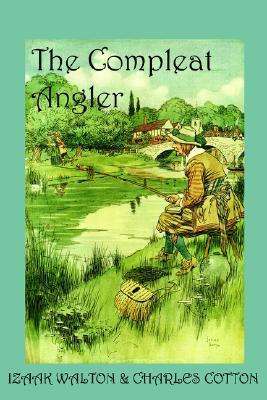Chapter IX — The Compleat Angler
byChapter IX – The Compleat Angler opens with a reflection on the reputation of the carp, long considered among anglers as the most cunning and elusive fish. Their high intelligence and ability to evade even the most skillful baiting efforts have earned them both admiration and frustration. Originally introduced to English waters by Mr. Mascal of Sussex, the carp was once a foreigner but has since flourished in selective regions. This fish, along with other newcomers such as turkeys and hops, marks a time of agricultural and culinary experimentation in England’s past. Carp are not only intriguing to pursue but also stand out for their adaptive nature and rich contribution to pond ecosystems. Their value lies not just in size or taste, but in the strategy they demand from the angler.
A notable trait of the carp is its ability to survive brief periods outside water, a resilience that allows it to be easily transported between ponds. Piscator describes how, under the right circumstances—such as a warm pond without aggressive predators like perch or pike—carp populations can quickly multiply. Spawning often occurs several times a year when the environment is stable, especially where aquatic vegetation can cradle their eggs. In colder rivers or streams, this process happens less frequently or not at all. Their selective breeding habits show how finely tuned their survival instincts are, often avoiding places they sense as unfit. This selectivity contributes to their reputation as a discerning and elusive catch, drawing seasoned anglers to test their skill and patience.
Remarkably, accounts have been shared of ancient carp reaching ages and sizes well beyond the average, though few such examples are confirmed in England. Even in carefully maintained ponds, they have been known to vanish inexplicably, baffling caretakers and fishermen alike. One curious phenomenon notes frogs attaching themselves to the fish, suffocating them in a way that defies expectation in calm waters. Such stories blend mystery and observation, creating a folklore that adds to the allure of carp angling. Even for practical minds, these tales suggest a deeper complexity in aquatic ecosystems. The carp, more than any other fish in this text, invites speculation, reverence, and continued inquiry into nature’s unseen workings.
As for the method of capture, carp require the angler to remain exceptionally still, observant, and restrained. Bait must be crafted with purpose: an ideal blend of finely chopped rabbit or cat flesh, flour, and honey, formed into soft pellets that appeal to their subtle taste preferences. Variation is encouraged depending on season and weather, with some recipes adding preserved meats or aromatic herbs to the mix. Fishing for carp at daybreak or just before sunset during warm months is believed to be most productive. It is at these times the fish venture into shallows to feed, revealing themselves only briefly and often retreating at the slightest disturbance. Piscator cautions that the line must be fine, the hook small, and the angler’s hand steady for any success to be had.
Beyond the thrill of catching, Piscator also honors the carp with a rich recipe intended not merely to fill the stomach, but to elevate the experience. The fish, once cleaned and prepared, is gently simmered in claret wine with a bouquet of herbs, onions, oysters, and anchovies. The aroma is said to be both comforting and regal, revealing why carp was considered fit for noble tables and celebratory meals. This preparation not only rewards the angler’s efforts but ties the act of fishing to the broader joys of life—good food, shared stories, and the appreciation of nature’s gifts. The chapter thus closes with a sense of reverence, not just for the fish, but for the entire ritual it represents: a blend of skill, observation, patience, and reward that defines the angler’s true delight.


